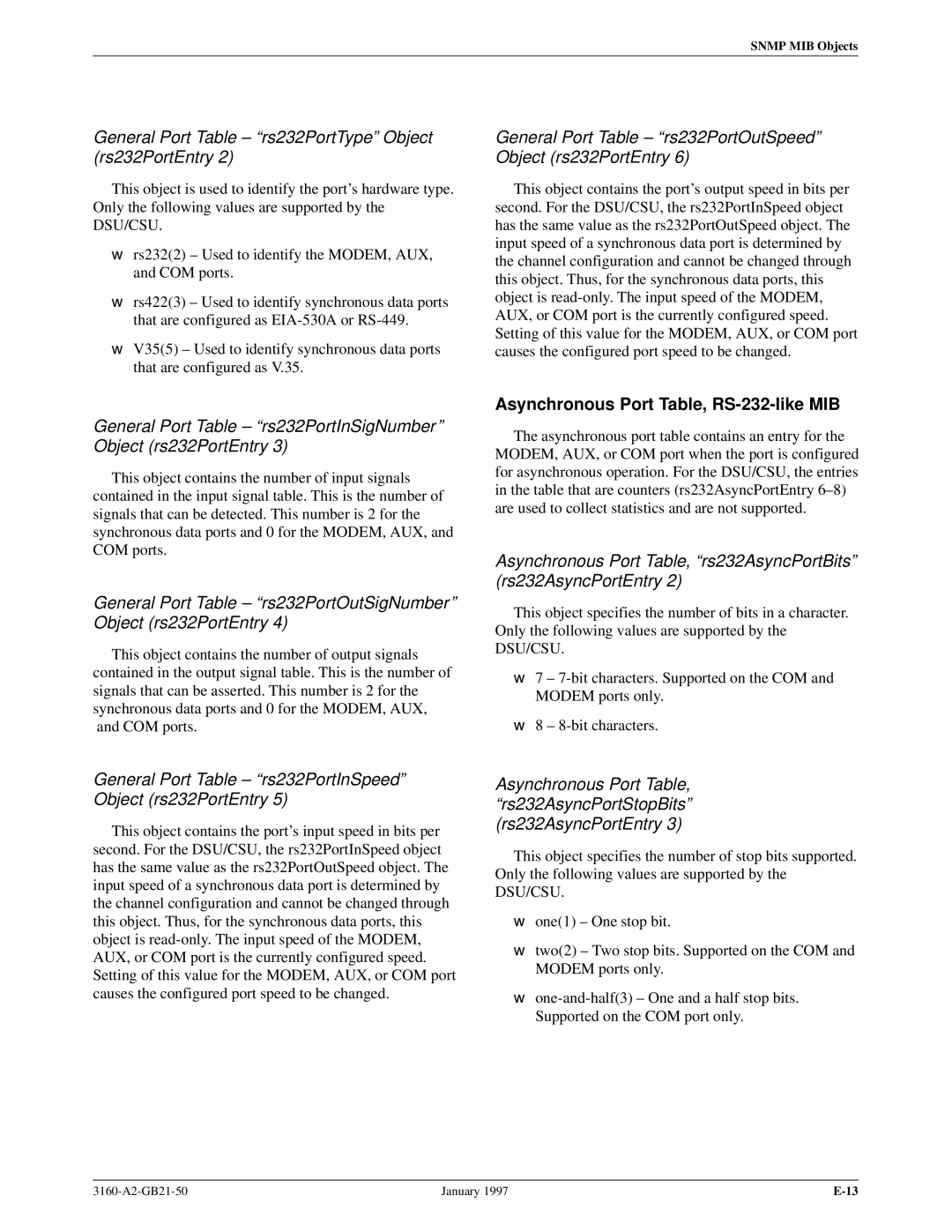
SNMP MIB Objects
General Port Table ± ªrs232PortTypeº Object (rs232PortEntry 2)
This object is used to identify the port's hardware type. Only the following values are supported by the DSU/CSU.
•rs232(2) ± Used to identify the MODEM, AUX, and COM ports.
•rs422(3) ± Used to identify synchronous data ports that are configured as
•V35(5) ± Used to identify synchronous data ports that are configured as V.35.
General Port Table ± ªrs232PortOutSpeedº Object (rs232PortEntry 6)
This object contains the port's output speed in bits per second. For the DSU/CSU, the rs232PortInSpeed object has the same value as the rs232PortOutSpeed object. The input speed of a synchronous data port is determined by the channel configuration and cannot be changed through this object. Thus, for the synchronous data ports, this object is
General Port Table ± ªrs232PortInSigNumberº Object (rs232PortEntry 3)
This object contains the number of input signals contained in the input signal table. This is the number of signals that can be detected. This number is 2 for the synchronous data ports and 0 for the MODEM, AUX, and COM ports.
General Port Table ± ªrs232PortOutSigNumberº Object (rs232PortEntry 4)
This object contains the number of output signals contained in the output signal table. This is the number of signals that can be asserted. This number is 2 for the synchronous data ports and 0 for the MODEM, AUX, and COM ports.
Asynchronous Port Table, RS-232-like MIB
The asynchronous port table contains an entry for the MODEM, AUX, or COM port when the port is configured for asynchronous operation. For the DSU/CSU, the entries in the table that are counters (rs232AsyncPortEntry 6±8) are used to collect statistics and are not supported.
Asynchronous Port Table, ªrs232AsyncPortBitsº (rs232AsyncPortEntry 2)
This object specifies the number of bits in a character. Only the following values are supported by the DSU/CSU.
•7 ±
•8 ±
General Port Table ± ªrs232PortInSpeedº Object (rs232PortEntry 5)
This object contains the port's input speed in bits per second. For the DSU/CSU, the rs232PortInSpeed object has the same value as the rs232PortOutSpeed object. The input speed of a synchronous data port is determined by the channel configuration and cannot be changed through this object. Thus, for the synchronous data ports, this object is
Asynchronous Port Table, ªrs232AsyncPortStopBitsº (rs232AsyncPortEntry 3)
This object specifies the number of stop bits supported. Only the following values are supported by the DSU/CSU.
•one(1) ± One stop bit.
•two(2) ± Two stop bits. Supported on the COM and MODEM ports only.
•
January 1997 |
